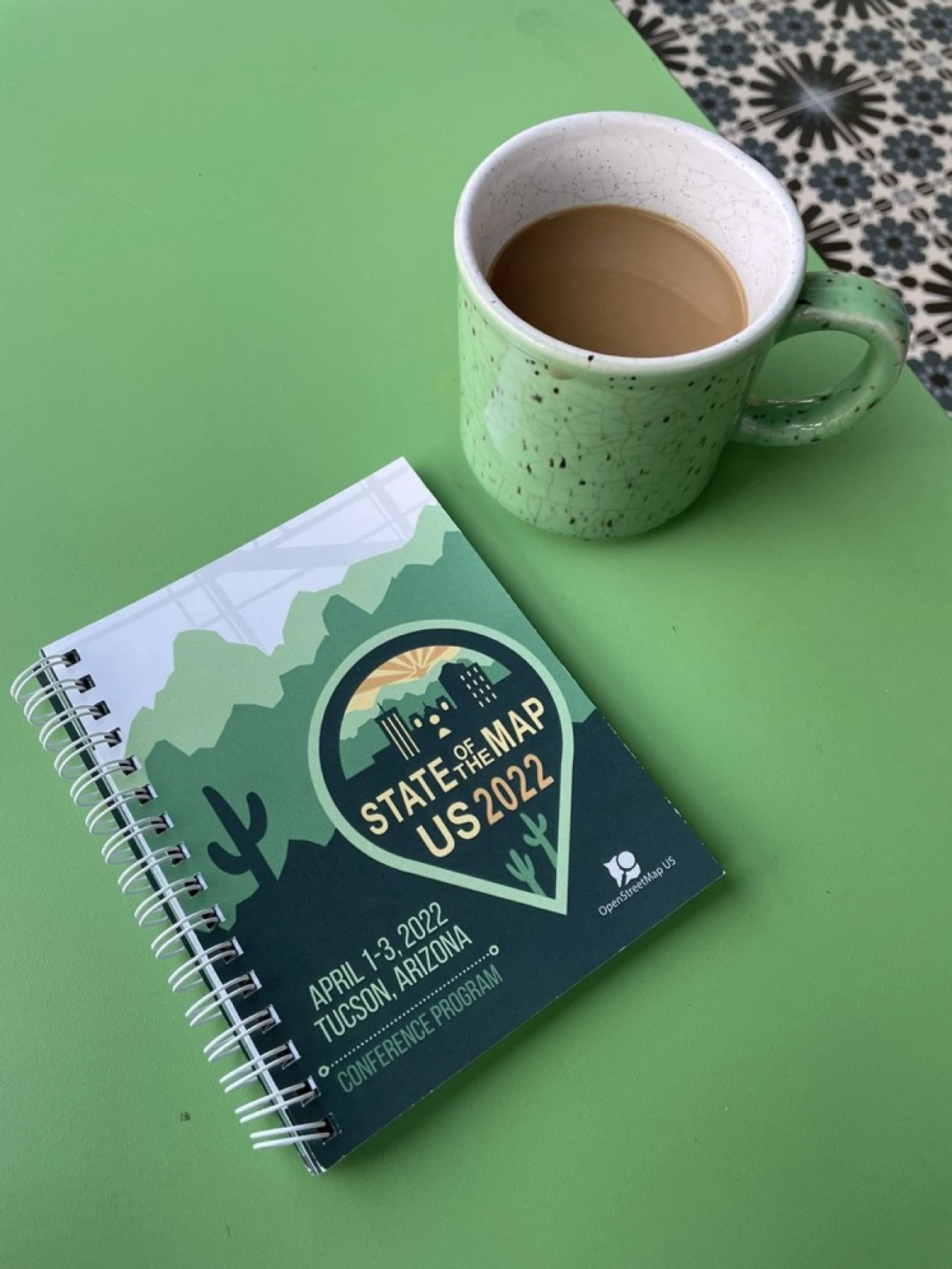Recap of State of the Map conference

Diane Fritz
On April 1-3, 2022 the University of Arizona hosted the OpenStreetMap conference State of the Map US 2022. This conference brought over 250 mapping and geospatial data enthusiasts from around the world, to the University of Arizona campus. Over 65 sessions brought the community together to share the latest technological advances, project success stories and community-building efforts over the past two years.
Kiri Carini, Geospatial Specialist at the University of Arizona Libraries was a core member of the conference planning committee, helping with campus and local logistics, recruiting student volunteers, and general promotion and outreach efforts.
On Thursday afternoon, University of Arizona Libraries welcomed State of the Map attendees for early registration and welcome social. Students at CATalyst Studios, the Libraries' makerspace organized some hands-on activities for conference goers. One of the CATalyst students had this to say about her first introduction to OpenStreetMap:
I loved the parts of the conference I was able to attend - it was serendipitous that it was at the UA this year. I really enjoyed the presentation on urban transport indicators based on OpenStreetMaps data. It was cool to see how open-sourced data could be used to create tools to compare different cities' bikeability. Since cycling is my primary mode of transportation, I am also familiar with the shortcomings of current modes of tagging bikeways - two routes both labelled "separated bike lanes" by the City of Tucson might look very different, with very different levels of safety, in actuality. The conference got me thinking about how geospatial data from sources like OpenStreetMaps might be applied to produce tangible changes in people's everyday lives, and how I might use such data in my field of study.
Emily Tran, Undergraduate Intern CATalyst Studios, Environmental Engineering

Kiri Carini State of the Map attendees make tote bags, buttons & pins in the Library makerspace, CATalyst Studios.
Here are a few highlights from the conference through the words of the UArizona volunteers:
“It was personally satisfying and validating to have participated in the State of the Map conference this year! I didn’t feel alone as a novice or in-training GIS enthusiast, given the diverse attendance. I was able to meet people of different backgrounds and expertise in GIS to learn from, who also understood the hard work that goes into this field. I learned about the Youth Mappers organization and how I could contribute towards their mission and projects – so maybe a future member! I was happy that we hosted the conference at the UA so to connect the OpenStreetMap community to GIS students from all the Arizona universities. The fact that the banner and marketing material looked great with saguaros is a plus!”
Victor Batres, MS-GIST student

Kiri Carini Early registration at CATalyst Studios
"For researchers, having an expert community gathered at home is priceless. It reduces the financial burden that sometimes limits or restrains them from participating at this type of event. A conference always is the perfect opportunity to exchange ideas, have in-depth conversations with peers, and consider new perspectives to enrich the research approach.
One aspect that stood out to me about this conference was the great potential of crowdsourced data to address and solve local community issues, and to get involved in those projects no matter where in the world you are. Absolutely inspiring!"
Liliana Salas, PhD Student, School of Information

Kiri Carini UArizona PhD student Liliana Salas learns how to use OSM Field Papers to edit OpenStreetMap with the help of OSM expert Willie Marcel of Development Seed.
The folks from the Data Science Institute were huge supporters of the conference:
"The State of the Map 2022 conference showed me how maps can empower communities that are traditionally taken advantage of, which I found extremely relevant to the indigenous and other underrepresented communities that make up Tucson AZ, and the state as a whole."
Dr. Greg Chism, Computation & Data Science Educator, Data Science Institute
The SOTMUS conference at the University of Arizona was very well organized. There were so many great sessions offered that it was hard to choose one over the other. CATalyst Studios at the UA Libraries and the UA Student Union were perfect venues with indoor and outdoor spaces where we could take advantage of the beautiful weather of Tucson.
Tina L. Johnson, Organizational Development Specialist, Data Science Institute

© James S. Wood Photography Data Science Institute volunteers: Dr. Greg Chism, TIna Johnson and Heidi Steiner.
Jeff Oliver, Data Science Specialist and Data Cooperative Unit Lead at UArizona Libraries participated in the conference by leading a workshop on using OpenStreetMap in the R programming language. We hope to offer this workshop to UArizona students again in the future so be sure and subscribe to the Data Cooperative newsletter to find out when it will be offered.

© James S. Wood Photography Dr. Jeff Oliver leads a workshop on OpenStreetMap in R.
We had a great time meeting everyone who attended and sharing University of Arizona and Tucson with mappers from all over the world. In case you weren't able to make it, the recorded talks are already starting to be posted on the OpenStreetMap US YouTube Channel.
Until next time, State of the Map!

Kiri Carini Kiri Carini and Glenn Ingram from Univ. Arizona Libraries attending sessions at State of the Map

